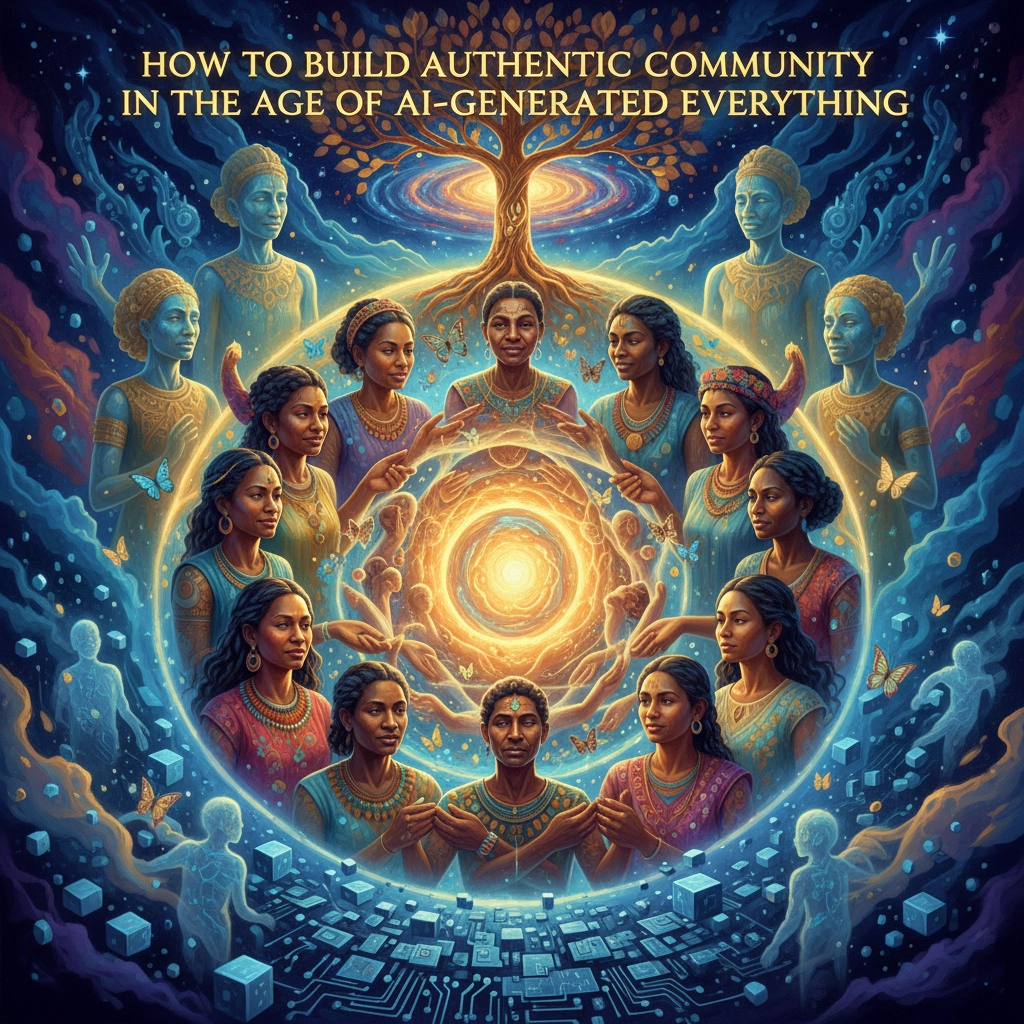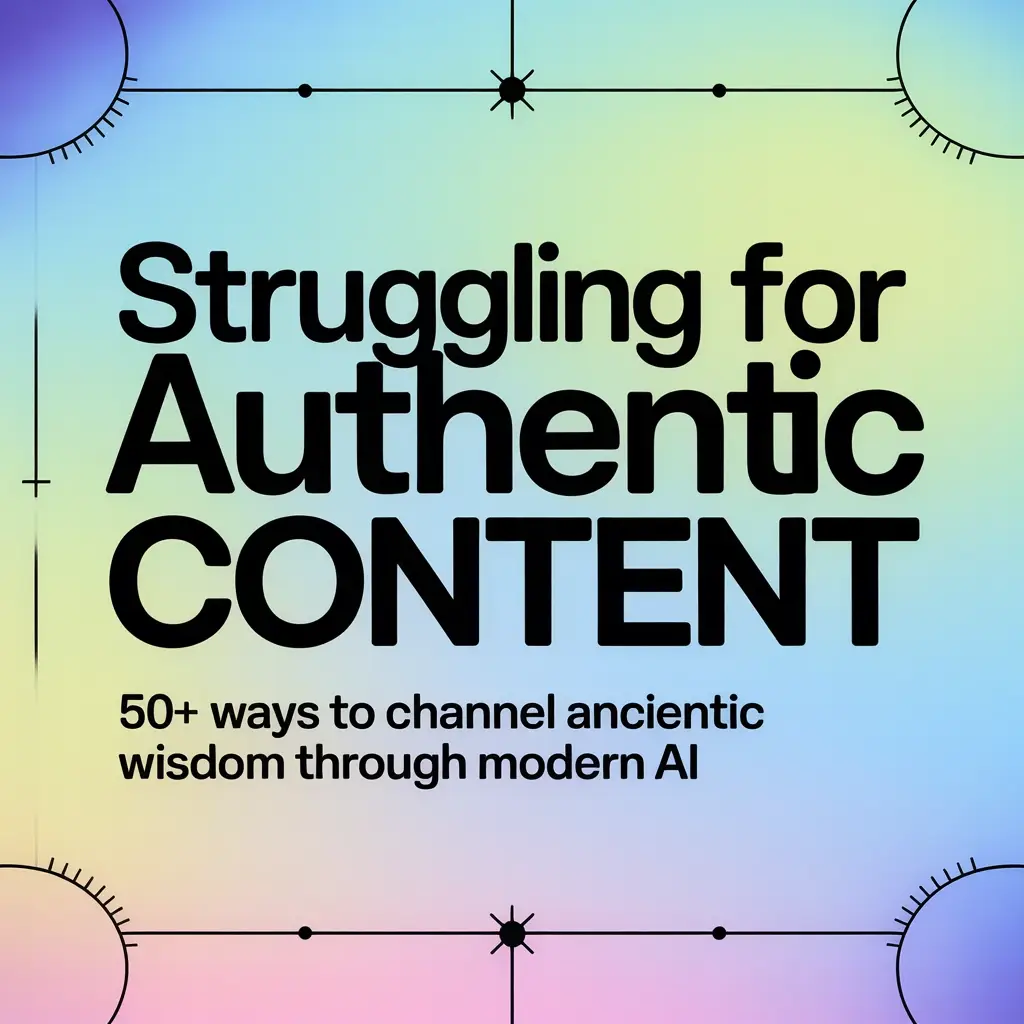Building real community when everyone's using AI tools requires stepping back from automation. The challenge isn't avoiding AI completely: it's knowing when human connection matters most.
Start with human verification
AI makes mistakes. Google's AI Overviews suggested eating stones and adding glue to pizza in May 2024. These failures show why human oversight matters for community building.
Review AI-generated content before posting. Have real people moderate discussions. Check that automated responses match your community values. The human expert remains irreplaceable for building credibility.
Human verification applies to:
- Content review and editing
- Discussion moderation with context
- Response alignment with values
- Member verification processes
Focus on authentic interaction over automation
Personal branding matters, but authenticity creates connection. Community members differentiate themselves by embracing their own voice and speaking honestly.
Building community around expertise requires authentic interaction. Answer questions directly. Engage in discussions. Build trust through transparency. AI can handle some customer service tasks, but meaningful relationships need human engagement.

Authentic interaction means:
- Direct responses to member questions
- Honest discussion about challenges
- Transparent communication about processes
- Personal investment in member success
Understand different community expectations
Everyone defines community differently. Some members want support and skill-sharing. Others seek camaraderie and connection. Different subcommunities often exist within larger groups.
Respect all voices. Provide appropriate channels for different conversation types. In B2B contexts, remember that decisions involve multiple people behind each contact. Make messaging memorable and easily translatable.
Community diversity includes:
- Support-focused members
- Skill-sharing participants
- Social connection seekers
- Professional networkers
Build through transparency
Open approaches work better than closed systems. When processes are shared openly rather than hidden, diverse input leads to better solutions. This transparency makes community members equal stakeholders.
AI systems raise concerns about data ownership, algorithmic bias, and unclear decision-making. Open practices address these issues by allowing scrutiny. This ensures technologies serve human priorities fairly.

Transparency practices:
- Open sharing of community guidelines
- Clear explanation of decision processes
- Accessible feedback mechanisms
- Regular updates on changes
Make interactions reciprocal
Community works both ways. Members get out what they put in. Invest proper time and effort so your community supports you when needed.
Everyone needs something eventually. Give before taking. When personal approaches don't scale, use language and examples that resonate deeper. People connect with feelings more than facts.
Reciprocal engagement involves:
- Contributing before asking for help
- Sharing knowledge and resources
- Supporting other members' goals
- Building long-term relationships
Create spaces for real connection
Real connection can't be automated. Genuine connection isn't convenient: it's messy, surprising, and human. This makes it valuable.
Prioritize activities AI can't replicate:
- Book clubs and discussion groups
- Volunteer meetups and service days
- Spontaneous coffee meetings
- Shared meals and social events
- Quiet conversations and walks
These spaces separate human connection from technology. AI can't replicate this kind of interaction.

Use AI strategically without losing humanity
AI tools can support community functions without replacing human connection. Use AI-driven tools for responding to basic inquiries, sharing updates, and preventing activity gaps. But maintain human moderators for sentiment analysis and emotional responsiveness.
Strategic AI use includes:
- Automated responses to common questions
- Scheduling and reminder systems
- Content organization and tagging
- Basic community health metrics
Keep human oversight for:
- Complex problem solving
- Emotional support and guidance
- Community culture development
- Relationship building
Build expertise and authority
Human experts bring knowledge, experience, and empathy that AI cannot replicate. Focus on developing and showcasing real expertise rather than relying on AI-generated content.
Share personal experiences and lessons learned. Admit mistakes and show how you've grown. This vulnerability builds trust more effectively than perfect AI-generated content.

Authority building requires:
- Sharing real experiences and failures
- Demonstrating ongoing learning
- Connecting theory to practical application
- Building reputation through consistent value
Focus on long-term relationship building
Authentic communities develop slowly through repeated positive interactions. Avoid shortcuts that prioritize growth over connection quality.
Invest time in getting to know individual members. Remember their challenges and celebrate their successes. This personal investment creates loyalty that automated systems cannot match.
Long-term focus means:
- Prioritizing quality over quantity
- Remembering individual member contexts
- Celebrating member milestones
- Building institutional memory
Measure what matters
Track engagement quality, not just quantity. Monitor how often members help each other, how long conversations continue, and how many real relationships form.
Avoid vanity metrics like follower counts or post likes. Focus on indicators of genuine connection and mutual support.
Quality metrics include:
- Member-to-member interaction rates
- Problem resolution through community help
- Long-term member retention
- Real-world relationship formation
Maintain boundaries with AI tools
Set clear boundaries around AI use in your community. Be transparent about what's automated and what's human. Members should know when they're interacting with AI versus real people.
Consider creating AI-free zones or times when only human interaction is allowed. This preserves spaces for genuine connection while still benefiting from automation where appropriate.
Building authentic community in an AI-dominated world requires intentional focus on human connection. Use technology to support community functions, but never let it replace the messy, surprising, deeply human experiences that create real bonds between people.
The communities that thrive will be those that successfully balance efficiency with authenticity, using AI as a tool while keeping human connection at their core.



